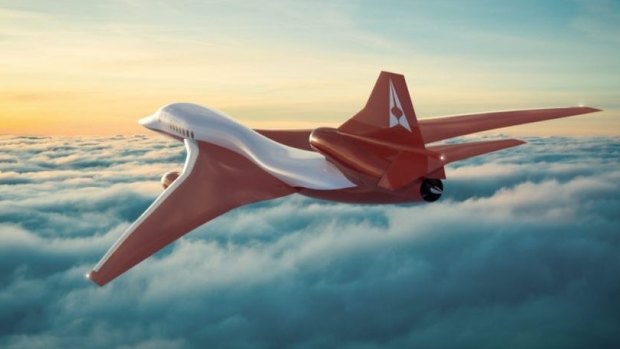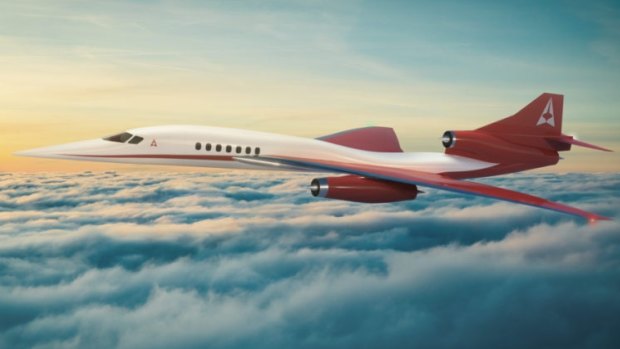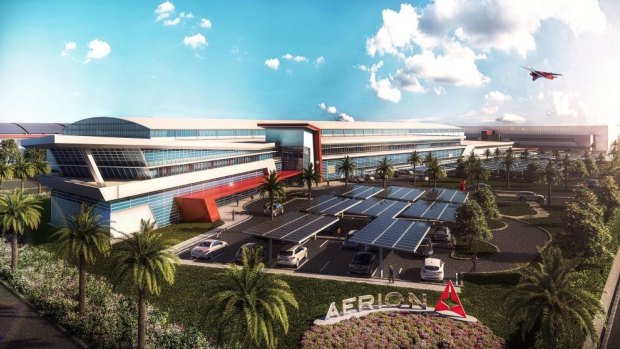By Craig Platt

Aerion aimed at introducing the first new commercial supersonic jets to enter service in more than 50 years.
It's a case of (sonic) boom to bust. The dream of starting a new era of supersonic air travel took a hit last week after Aerion, one of several companies developing the next generation of supersonic aircraft, ceased operations.
The company said it had failed to secure enough funds to start building its AS2 supersonic private jet, which was to be the forerunner for the AS3 - a supersonic commercial airliner.
Aerion, which had received financial backing from aircraft manufacturing giant Boeing, had planned to start building its planes from 2023 at a US headquarters in Melbourne, Florida.

The AS2 would have flown at mach 1.4, or 1715 km/h. The company says the jet would carry between eight and 12 passengers and could make the flight from New York to London in 4.5 hours.
According to Bloomberg, the company had secured $US11 billion ($A14 billion) in orders for its planes, but like many other aerospace companies, Aerion was hit badly by the downturn in aviation caused by the COVID-19 pandemic.
Aerion planned to build 300 AS2 jets in its first 10 years once production began. The plane had a price tag of $US120 million.
"While we are disappointed Aerion could not secure additional funding to continue their work, we remain committed to working with innovative and creative partners who, like Aerion, continue to push limits on groundbreaking technology," Boeing told Bloomberg in a statement.

Aerion's planned headquarters in Melbourne, Florida.
Aerion aimed at introducing the first new commercial supersonic jets to enter service in more than 50 years. The only other supersonic commercial jet, the Concorde, was retired in 2003, three years after the crash of an Air France Concorde that killed 113 passengers and crew.
The AS2 would fly at mach 1.4, or 1715 km/h. The company says the jet would carry between eight and 12 passengers and could make the flight from New York to London in 4.5 hours, compared with about seven hours for regular commercial planes. It would cut at least four hours off the flight time between New York and Sydney, which took more than 19 hours on a Qantas test flight in 2019 using a Boeing 787 Dreamliner.
In December the AS2 design completed wind tunnel tests at high and low speeds, the equivalent to 78,000 nautical miles (144,000 kilometres) flown, according to Aerion.
Aerion aimed to achieve several firsts with the AS2, including using what it called "Boomless Cruise" technology that will allow it to fly at supersonic speeds without creating a sonic boom. Supersonic flight is typically banned by authorities over land due to sonic booms.
While Aerions plans may have hit devastating head winds, several other companies are continuing to pursue faster forms of air travel. Boom Supersonic plans to build the Overture, an all-business class airliner that could fly from Los Angeles to Sydney in eight hours, 30 minutes, cutting up to four hours off the current flight time.
In November Boom unveiled the XB-1, a one-third scale test aircraft and the world's first commercially developed supersonic plane. Boom says Virgin Atlantic and Japan Airlines have already placed orders for the Overture.
Meanwhile, space tourism is moving closer to reality faster than supersonic flight, with Richard Branson's Virgin Galactic completing a third successful test flight on Saturday with its VSS Unity spacecraft.
While space tourism is the initial plan for Virgin Galactic, Branson told Traveller in 2015 this could eventually evolve into point-to-point travel, including flights that could take passengers from Sydney to London in two hours.
Amazon's Jeff Bezoz is also in the space race, with plans for his aerospace company Blue Origin's New Shepard rocket to take paying passengers into space in July. Seats were auctioned off and going for as much as $1.8 million.
See also: Why airlines no longer use rear-engine planes
See also: Revolutionary 'Flying-V' aircraft design completes successful test flight
Sign up for the Traveller newsletter
The latest travel news, tips and inspiration delivered to your inbox. Sign up now.